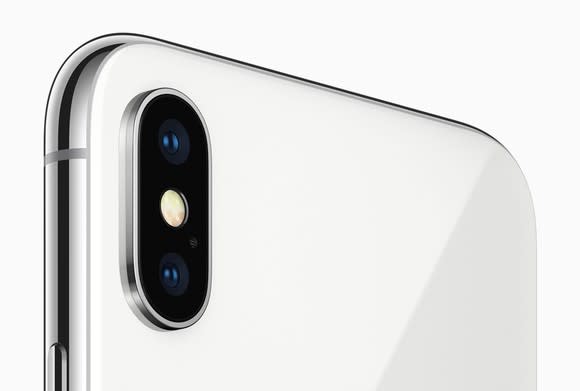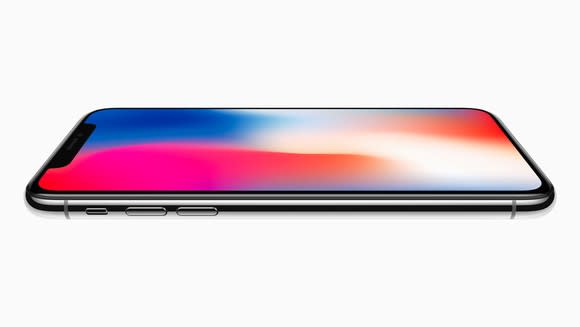Apple Inc.'s License to Innovate
Ahead of the launch of Apple's (NASDAQ: AAPL) flagship iPhone X, there was a lot of skepticism that customers would be willing to pay $999 or more for an iPhone. After all, for years, Apple's flagship iPhones started at $649.
As it turns out, that skepticism seems to have been largely unfounded.
A report from Rosenblatt Securities analyst Jun Zhang recently said that he expects Apple to ship 30 million iPhone X smartphones during the quarter that ends in December (Apple's first quarter of fiscal-year 2018), and then expects those shipments to ramp up to 40 million units in the quarter that ends in March.

Image source: Apple.
That's a lot of iPhones being sold for between $999 (the price of the 64 GB iPhone X) and $1,149 (the price of the 256 GB iPhone X). Moreover, Zhang claims that the iPhone X with 256 GB of storage is outselling the one with 64 GB of storage by a staggering two-to-one ratio.
There are literally tens of millions of individuals who don't mind paying between $999 and $1,149 for Apple's best smartphones.
Here's what this means for Apple and its investors.
Customers willing to pay for quality and innovation
With the apparent success of the iPhone X, Apple has now proven that if it builds devices at higher price points, it'll still be able to sell them in droves.
Part of that, of course, is due to the enormous brand equity that Apple has built over the years, but I'd say a larger part is simply that Apple delivered a product with the iPhone X that was worth its asking price.
The iPhone X has an incredibly high-quality, full-face organic light emitting diode (OLED) display -- it's arguably the best display that can be found on a commercially available smartphone today. It also has a premium stainless-steel-and-glass body, as well as an innovative TrueDepth camera system that can perform facial tracking and facial recognition.

Image source: Apple.
It has an excellent rear-facing camera that, by all accounts, takes great still images and videos; it also has a blazing fast processor.
Put simply, the iPhone X represents the current state-of-the-art in mobile computing technology and pushes technological and industrial design boundaries in ways that previous iPhones simply didn't -- and Apple is being rewarded for that innovation in the marketplace.
A green light for continued innovation
Going forward, Apple should have the confidence to continue to invest in new iPhone models designed to be sold at $999 and up -- the company now knows that as long as it brings enough innovation, it'll be able to sell them.
What's potentially more interesting, though, is the opportunity for Apple to try selling devices at still higher price points. My guess is that Apple will do that with next year's iPhone lineup by launching a direct successor to this year's iPhone X at the same price point as this year's iPhone X, and then launching the rumored iPhone X-like device with a larger 6.46-inch OLED display at an even higher price point.
If Apple sees strong demand for the 6.46-inch OLED iPhone at, say $1,099 for the 64 GB version and $1,299 for the 256 GB version, then it may adjust its product development pipeline to include even more expensive-to-build components and features in future devices.
My guess is that Apple's iPhone average selling price growth story isn't over, which could mean significant iPhone revenue growth for years to come.
More From The Motley Fool
6 Years Later, 6 Charts That Show How Far Apple, Inc. Has Come Since Steve Jobs' Passing
Why You're Smart to Buy Shopify Inc. (US) -- Despite Citron's Report
Ashraf Eassa has no position in any of the stocks mentioned. The Motley Fool owns shares of and recommends Apple. The Motley Fool has the following options: long January 2020 $150 calls on Apple and short January 2020 $155 calls on Apple. The Motley Fool has a disclosure policy.
